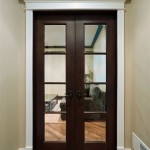How To Discover Your Interior Design Style
Identifying a personal interior design style can feel like navigating a complex maze. With countless aesthetics and trends vying for attention, discerning what truly resonates can be a challenge. However, understanding your preferences and translating them into a cohesive living space doesn't have to be overwhelming. This article outlines a comprehensive approach to unearthing your unique design style, enabling you to create a home that reflects your personality and enhances your daily life.
The journey to discovering your style begins with introspection and conscious observation. It involves analyzing your existing preferences, exploring various design elements, and experimenting with different combinations. By systematically addressing these areas, you can create a foundation for informed decision-making and develop a clear vision for your ideal living space.
Analyzing Existing Preferences and Lifestyle
Before diving into design magazines and online resources, it is essential to examine the spaces and objects you already gravitate towards. Consider the clothes you wear, the places you enjoy visiting, and the art you admire. These seemingly unrelated aspects of your life often hold valuable clues about your underlying aesthetic preferences.
Start by assessing your wardrobe. What colors, patterns, and textures dominate your clothing choices? Do you prefer tailored silhouettes or relaxed, flowing fabrics? Note the common threads that run through your favorite outfits. A preference for neutral tones and minimalist lines might indicate a Scandinavian or modern aesthetic, while a penchant for bold colors and intricate patterns could point towards a bohemian or eclectic style.
Next, reflect on the types of environments that evoke positive emotions. Do you feel most comfortable in cozy, intimate settings or in open, airy spaces? Are you drawn to natural landscapes or urban environments? The answers to these questions can provide insights into your preferred spatial arrangements and design elements. For example, someone who finds solace in nature might be drawn to biophilic design principles, incorporating natural materials and bringing the outdoors in.
Examine the artwork and objects you collect. What themes, colors, and styles do you find appealing? Are you drawn to abstract expressionism, classical portraits, or contemporary photography? The art you choose to surround yourself with often reflects your personal values and aesthetic sensibilities. Similarly, consider the types of objects you collect, such as vintage ceramics, antique furniture, or modern sculptures. These items can serve as visual cues for your overall design style.
Your lifestyle also plays a crucial role in determining your ideal interior design style. Consider your daily routines, hobbies, and social activities. Do you need a dedicated workspace for remote work, a spacious kitchen for entertaining, or a cozy reading nook for relaxation? Your design choices should prioritize functionality and cater to your specific needs. A family with young children, for instance, might opt for durable, easy-to-clean materials and child-friendly furniture, while a minimalist might prioritize decluttering and maximizing open space.
Exploring Various Interior Design Styles and Elements
Once you have a better understanding of your existing preferences, it is time to explore the vast landscape of interior design styles. Familiarize yourself with the defining characteristics of each style, from classic to contemporary, and identify the elements that resonate with you. Researching different styles will help you broaden your perspective and refine your own unique taste.
Classic styles, such as Traditional, French Country, and Victorian, are characterized by their elegance, formality, and attention to detail. These styles often feature ornate moldings, luxurious fabrics, and antique furniture. Traditional style emphasizes symmetry and balance, while French Country incorporates rustic elements and natural materials. Victorian style is known for its opulence and elaborate ornamentation.
Modern styles, such as Mid-Century Modern, Scandinavian, and Minimalist, prioritize simplicity, functionality, and clean lines. Mid-Century Modern features iconic furniture designs from the 1950s and 1960s, while Scandinavian emphasizes natural light, neutral colors, and cozy textures. Minimalist style is characterized by its stark simplicity and emphasis on essential elements.
Eclectic and bohemian styles offer a more 자유로운 and expressive approach to interior design. Eclectic style involves mixing and matching different styles and eras, creating a harmonious and personalized space. Bohemian style is characterized by its unconventional aesthetic, incorporating vintage finds, global textiles, and vibrant colors.
Coastal and farmhouse styles evoke a relaxed and inviting atmosphere. Coastal style draws inspiration from the beach, incorporating natural materials, light colors, and nautical accents. Farmhouse style emphasizes rustic elements, such as reclaimed wood, vintage furniture, and cozy textiles.
In addition to exploring different styles, it is important to understand the key elements that contribute to a cohesive design. These elements include color palettes, materials, textures, furniture styles, lighting, and accessories. Experiment with different combinations of these elements to create a visual representation of your desired aesthetic.
Color is a powerful tool that can evoke different moods and emotions. Consider the psychology of color and how different hues can affect your overall well-being. Warm colors, such as red, orange, and yellow, are associated with energy and excitement, while cool colors, such as blue, green, and purple, are associated with calmness and serenity. Neutral colors, such as white, gray, and beige, provide a versatile backdrop for highlighting other design elements.
Materials and textures play a crucial role in creating visual interest and tactile appeal. Experiment with different combinations of wood, metal, glass, fabric, and stone to create a layered and dynamic space. Natural materials, such as wood and stone, add warmth and character, while smooth surfaces, such as glass and metal, create a sleek and modern look.
Lighting is essential for creating ambiance and functionality. Consider the different types of lighting, including ambient, task, and accent lighting. Ambient lighting provides overall illumination, while task lighting is used for specific activities, such as reading or cooking. Accent lighting is used to highlight artwork or architectural features.
Experimenting and Refining Your Style
The final step in discovering your interior design style involves experimentation and refinement. Don't be afraid to try different things and learn from your mistakes. Create mood boards, gather inspiration from online resources, and visit furniture stores and showrooms to get a better sense of what you like. The process of experimentation will help you solidify your vision and develop a cohesive design plan.
Start by creating mood boards that visually represent your desired aesthetic. Gather images from magazines, websites, and social media platforms that inspire you. Include images of furniture, fabrics, colors, and accessories that reflect your personal style. Arrange these images on a board and analyze the common themes and elements that emerge.
Utilize online resources, such as Pinterest, Instagram, and Houzz, to discover new ideas and trends. Follow designers, bloggers, and influencers whose work resonates with you. Save images and articles that inspire you and create virtual mood boards to organize your ideas. These platforms offer a wealth of information and visual inspiration that can help you refine your style.
Visit furniture stores and showrooms to experience different furniture styles and materials firsthand. Sit on sofas, touch fabrics, and examine the construction of different pieces. This hands-on experience will help you make informed decisions about your furniture choices. Don't be afraid to ask questions and seek advice from sales associates.
Start small by making changes to one room at a time. This will allow you to experiment with different ideas without committing to a complete overhaul. Paint a wall, change the curtains, or add a new piece of furniture. Observe how these changes affect the overall feel of the room and adjust your approach accordingly.
Solicit feedback from friends and family. Ask for their honest opinions about your design choices. Consider their suggestions carefully, but ultimately trust your own instincts. Remember that your home should reflect your personal style and cater to your specific needs.
Be patient and persistent. Discovering your interior design style is a journey, not a destination. It takes time to develop a clear vision and refine your aesthetic preferences. Don't be discouraged if you don't get it right the first time. Keep experimenting, learning, and refining your approach until you create a home that truly reflects your personality and enhances your daily life.

How To Figure Out What S My Design Style Worthing Court

Dear Urbaneer How Do We Establish Our Interior Design Style

Find Your Interior Design Style Quiz Southern Motion

How To Find Your Unique Personal Interior Design Style Dwell Beautiful

How To Figure Out What S My Design Style Worthing Court

Interior Design Styles 101 The Ultimate Guide To Decorating In 2024 Decorilla

How To Find Your Design Style The Havenly Blog Interior

Designer Society Of America Interior Design Education Certification Designers Resources

Design Style Quiz Find Your Interior

Interior Design Styles 101 The Ultimate Guide To Decorating In 2024 Decorilla
Related Posts








